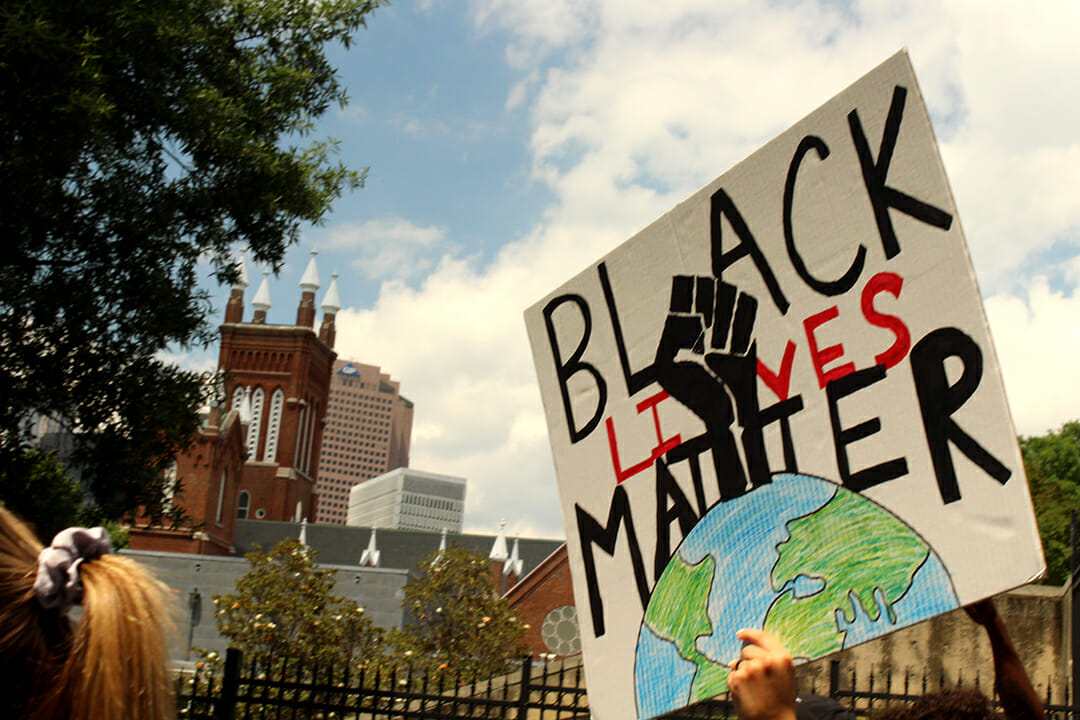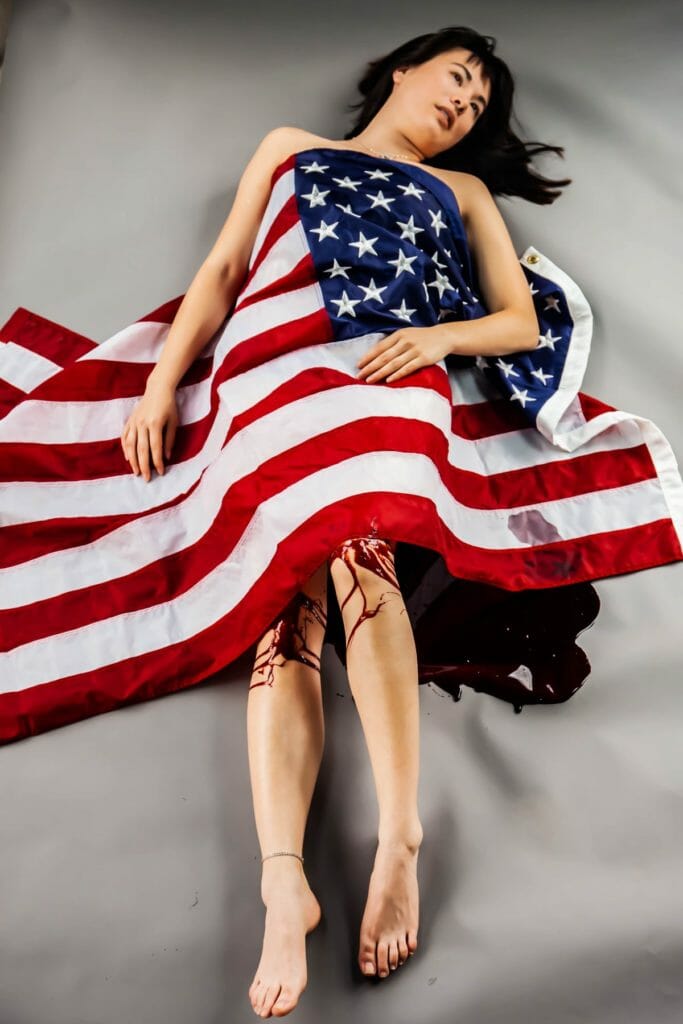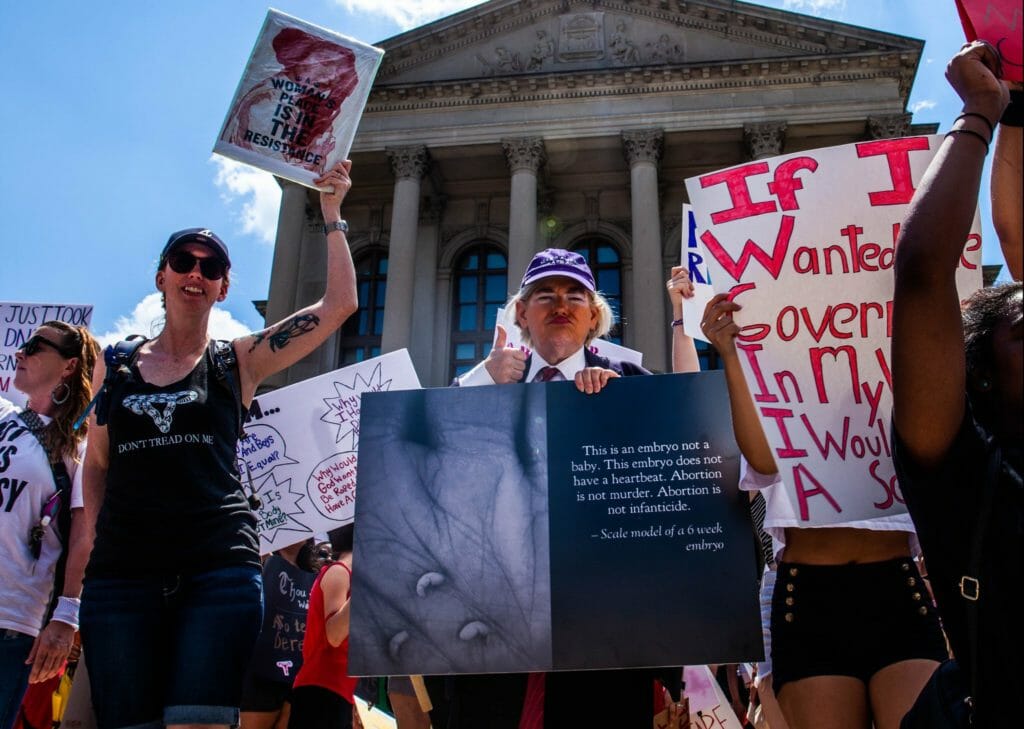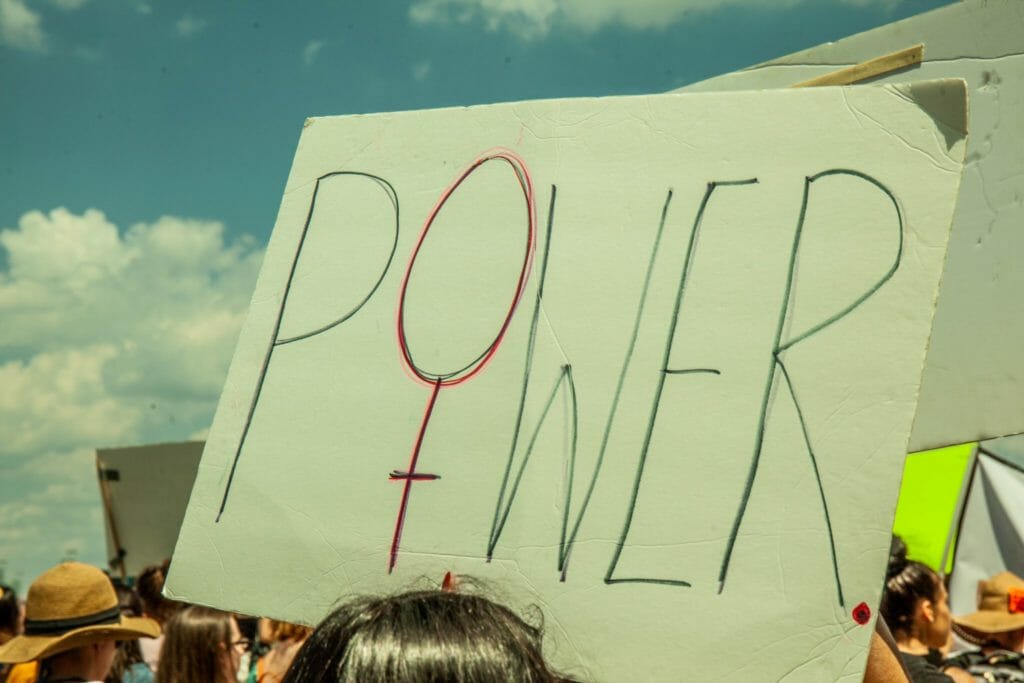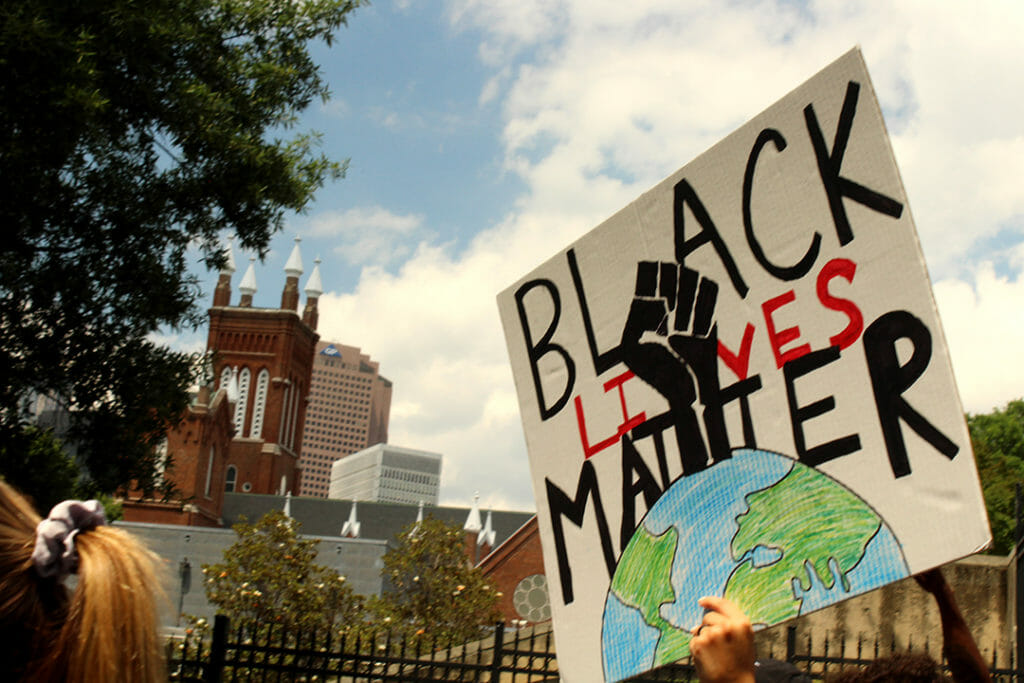
On Sun., May 31, thousands of protestors flooded the streets of Athens, Ga., in the name of George Floyd. The demonstration was largely peaceful until midnight, when officers of the Athens-Clarke County Police Department (ACCPD) used tear gas and shot rubber bullets at the remnants of the crowd, arresting a total of 19 protestors. It was reported that the protestors were arrested for refusing to go home, that they incited no violence, and that their only offense was spray painting a Confederate monument, which would only warrant the use of tear gas and rubber bullets in a Unitary state. I later spoke with an ACCPD officer who was present at the scene and is also an extended family member. He informed me that the violence was started by the Boogaloo Boiz, a far-right extremist group who arrived at the protest armed with shotguns and assault rifles, just itching to cause trouble.
However, student, activist, organizer, and musician C.S. — who requested to go by their initials for the purposes of this article to remain anonymous — said on social media that there were no Boogaloo Boiz present at the time of the police\’s assault. They insisted that all of the remaining 80 protestors, including themself, were unarmed and peaceful at the time they were assaulted by the ACCPD under the instruction of Mayor Kelly Girtz and Police Chief Cleveland Lee Spruill. Aside from the midnight controversy, which C.S. is currently fighting to right by calling for the release of the ACCPD’s drone footage, Athens protestors successfully made a statement with their march in terms of numbers.
Nonetheless, it did not fully drive the point home.
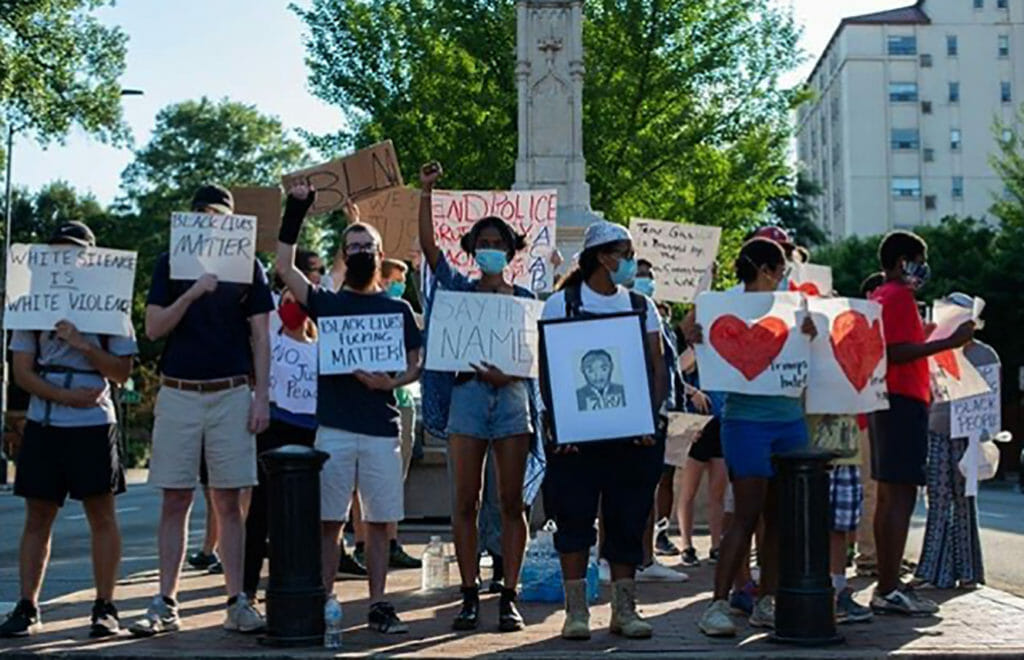
Yes, there was an impressive turnout. And yes, it was a righteous embodiment of the agony that 400 years of systematic oppression inflicts. However, one unified march will not turn the vapor of ideas into reality. The desired abolition and carnage of Old America can be ensured only by cities embodying movements, not simply marches.
Ever since the election of President Donald Trump, America has harbored a staggering yet necessary amount of marches. Take, for example, the march against the president’s inauguration, the annual Women’s March, or even the March For Our Lives, which called for national gun reform following the 2018 Parkland, Fla., school shooting. Though these marches filled the streets in dozens of cities, in retrospect, they acted merely as awareness boosters for their causes. Trump is still in office. Women are still paid less than men and are still sexually harassed in the workplace at high-rates. The March For Our Lives campaign technically led to gun reform, but it was so minimal that it leads me to believe the government issued it simply to sedate those calling for action. Another nationwide Black Lives March march will not be enough to change the course of the country. At its core, a march is an eye-catching yet fleeting demonstration; its momentum spikes quickly and flattens even quicker.
A movement, however, is a cultural obsession; a total rearrangement of the lifestyle of millions. Those involved in a movement live, breathe, and dream their cause. It ignites a fire that isolated marches could never match. One that continues to burn while the country may seem at ease, and, in the wake of George Floyd’s death, America is successfully forming its first true movement since, well, Trump’s MAGA campaign.
Atlanta is a national hotspot for the movement and has set a great example for its surrounding cities. Two weeks ago today, a relatively peaceful legion of protestors marched through downtown in the beginnings of Atlanta’s initial uprising on Fri., May 29. I participated in the march, and could tell from the level of focus and palpable rage exuded by the streets that this march was only the beginning.

I was correct. Police-versus-protesters tensions snapped just an hour after the march, leading to an outburst that seemed unreal at the time. The people were actually rising up. Right before my eyes, the people were practicing the democratic duty granted to all Americans by Thomas Jefferson himself in the Declaration of Independence: “But when a long train of abuses and usurpations…reduce [the people] under absolute Despotism, it is their right, it is their duty, to throw off such Government, and to provide new guards for their future security.” This American principle has long been thought of as a simple ideation, but that night in Atlanta, Jefferson’s words came to life.
The looting and other “riotous” acts that followed were not unique to Atlanta’s protests that night. As the uprisings continued into the next week, news outlets regularly showed buildings destroyed and ablaze while covering Black Lives Matter protests across the country. These sorts of acts have been condemned by organizers, stating looting and violent acts are not aligned with the motives of the movement. Nevertheless, regardless of how it happened, it was a display of unrest that spoke louder than any discourse.
Deeming that night in Atlanta good or bad, or greedy and destructive, is futile. What happened happened, and it is undeniable that the looting, anarchy, and uprising that took place was a catalyst for the resurgence of peaceful and organized movements in Atlanta through igniting loads of momentum. Since that night, there has been an abundance of daily marches and static demonstrations, each garnering unwaveringly large crowds full of people from every creed and color. However, for anyone well-versed in Atlanta’s place in the history of civil rights movements, these efforts should not be nearly as surprising as those slowly developing in various rural, majority-white cities in the south. Most notably, Athens.
Athens is a city rooted in its university. The University of Georgia (UGA) was an all-white institution for its first 76 years and now maintains a white majority of roughly 67%. According to its campus newspaper, The Red and Black, UGA has shown “minimal growth in minority applicants” over the past 10 years. If one digs deeper into the core culture of the university, they’ll find that overt racism is not only normalized, but a staple of the culture itself. Black-facing and Confederacy-praising were popular party themes until the early 2000s, and even now, there is a presence of closeted racists who are rarely justly persecuted for their actions.
In 2015, Athens bar General Beauregard’s, which was named after a Confederate general, was exposed for naming a drink the N*****ita. The owners refused to admit they were aware of this drink and the controversy died down as quickly as it rose, primarily because it wasn’t an abnormal occurrence. There was no shock value; it was a normal, laughable instance for some. As a student at UGA, I’ve walked past that bar countless times and it is consistently packed with big-belt-buckled boys who sing along to old Confederate songs like “I Wish I Was In Dixie Land.” The first lines are a fan favorite: “Oh, I wish I was in the land of cotton / Old times they are not forgotten.”
Those lyrics, sadly, still ring some truth in Athens. Just last year, a video showing four white fraternity boys mocking slavery by beating each other with belts made national headlines. At the end of the video, one of them yells, “Pick my cotton, n*****!” The fraternity was suspended from campus and the four students were expelled from the fraternity, but not from the school. Again, this was not an abnormal occurrence.
So how does a city that exists as a glowing portrait of white supremacy foster a movement whose key goal is the ultimate liberation of Black people? It certainly wasn’t going to spark up by itself, and the aforementioned C.S. knew that.
On Mon., June 1, I left Atlanta after a weekend of protesting and headed back to Athens. While walking around downtown, I saw C.S. sitting on the curb in front of the Athens arches, a landmark that acts as a barrier between campus and downtown, holding a framed portrait of Martin Luther King, Jr. They were accompanied by a friend who carried a pack of bottled water and Nature Valley bars under their arm. Behind them was a white student standing symmetrically in front of the arches, posing as a peacekeeper of sorts. He was dressed in an all-white karate robe, sporting a blue mask that read in bright red sharpie, “I CAN’T BREATHE.”
C.S. is originally from Atlanta and currently a student at UGA. They built their foundation in activism by studying the protest mythology of great Atlanta civil rights activists such as Dr. Martin Luther King, Jr., Ralph David Abernathy, and John Lewis.
I sat down behind C.S. to say hello when they said they saw me at the Governor’s mansion protest in Atlanta just two days prior. I then asked them why they decided to leave Atlanta for Athens. It seemed odd to me, especially considering C.S.’s personal activism efforts along with how fast Atlanta was gaining momentum on both a state and national level. They looked back at me and remarked that Atlanta will continue to strengthen without them, but Athens is in desperate need of an organizer. Essentially, they said, “Atlanta has their shit together; they’re on the same page. Athens, however, is not. But it needs to be because of how divided it is, and it can be by following Atlanta’s lead and sparking a fire of its own.”
In less than a week, C.S. has elevated their organized protests from a rat-pack of four curbside protestors to consistent crowds that range in the hundreds. Instead of sitting on the curb, their meeting point is now a Confederate monument that rests on top of Confederate soldiers’ graves. The change in location was a smart and effective move, as Mayor Kelly Girtz recently announced that the monument will be removed as soon as possible. Like nearly all Black Lives Matter protests, it is a calm, peaceful, inclusive environment. Food and water are given to all who ask, various petitions are passed around, signs are shared, ideas for reform and abolition are discussed, and the city’s support (quantified by car honks) is impossible to miss.
C.S. runs a tight ship at these demonstrations. They are formally there from 12 p.m. to 3 p.m. and 6 p.m. to 9 p.m. every day, circling around with a small megaphone informing those who inquire about the whats and whys of the protest, and, most importantly, keeping the peace. They outlined clear rules for the protests over social media that spread through the student community: “WE WILL BREAK NO LAWS. WE WILL CONTINUE TO DEMAND JUSTICE. WE WILL BE SEEN.”
C.S. practices what they preach. On Fri., June 5, the organizer led the protests in a moment of kneeling in silence to honor Breonna Taylor on what would have been her 27th birthday. Taylor, an EMT, was shot and killed by police officers in her home in Louisville, Ky., on March 13. This silence did not go as planned due to an intoxicated (white) vagrant sitting criss-cross-applesauce in the middle of the protest, throwing his water bottle up in the air, shouting “hoorah” with drunken glee. Instead of yelling at the man to be quiet or trying to remove him from the demonstration, as some protestors did, C.S. handled the situation with the maturity and grace of a tenured mother. After the kneeling minute was over, they walked over to the man, bent down to his level, and informed him that he is welcome at their protest as long as he abides by their rules. He then took the stance of a guilt-ridden party-crasher, exclaiming that he ruined the entire protest by being disrespectful and that he understood he was being asked to leave.
“I do not want you to leave,” C.S. insisted. “You’re welcome here. Just be respectful.” The man was silenced, seemingly in awe of the humanity he was being treated with. C.S. gave him food and water before escorting him out of the protest with a hug.
For this movement to fulfill its doctrines, it must encompass as much of the country as possible. If unified and peaceful, what places could send shockwaves through the nation better than historically bigoted Deep South cities such as Athens, Auburn, and Montgomery? None that I can think of.
In the wake of George Floyd’s death, each of these cities has made an effort. Athens’ protests have resulted in a gradual increase of support and unity, along with a city wide demonstration on Sat., June 6, which was fueled by music, poetry, and a conglomerated support for detailed reform platforms presented by local officials and candidates. Auburn’s has resulted in a largely successful march and a couple of other large protests hosting a few hundred people, but they are still a few steps behind the curve, which is expected from a city that is smaller and even more racially-polarized than Athens. Montgomery toppled a statue of Gen. Robert E. Lee that had long been controversial due to it standing in front of one of the city’s largest majority-black high schools.
This movement, though relatively new, has shown a resilience that is rivaled in American history only by the civil rights movement of the 1960s. The two decisive factors that separate the current movement from its revered ancestor are the internet and the amount of solidarity shown by white people. The combination of these new phenomena characterizing this movement came to life on Sun., June 7, during a 100-person protest organized by church leaders via Facebook and Instagram. The protest was held at the steps of city hall in Rome, Ga., a majority-white city that held “segregated proms” until the 1990s.
The internet allows for protest information and news to spread faster than ever. Back in the 1960s, the famous sit-ins demonstrations, which originated in Greensboro, N.C., took seven months to gain national momentum. Whereas this time around, with just two days of planning, Atlanta activist 19-year-old Zoe Bambara was able to organize a peaceful demonstration that was “larger than protests many experienced activists had planned during their entire careers.” This and countless other spontaneously planned protests are largely a result of the extremely effective and growing trend of story reposting on Instagram, which allows users to share critical protest information in just two clicks.
As far as the role of white people goes, I’m sure that we could all name a handful of people who have argued against this movement on the basis of the economy, who have focused on the destruction of property instead of the destruction of life, and who are either inherently racist or just plain silent because the current events make them uncomfortable.
Yes, there are plenty of white people today who oppose the movement because they feel their privilege is their birthright, and that Black people should just work harder. Yes, there are plenty of white people today who embody the opposing force by wanting things to stay the same. But their numbers and activity pale in comparison to the white people who are fighting the good fight. Go to any demonstration, be it in Atlanta or North Dakota, and there will likely be 10 white allies for every one enemy.
If the South has made this much progress just two weeks into the revolution — and small cities such as Athens, Auburn, Montgomery, and Rome agree that enough is enough and are fighting the same fight as Atlanta, New York City, and Los Angeles — then I see no way of this revolution coming to a halt until victory is achieved.
With 40 million Americans out of work and the majority stuck inside their homes, American citizens have never been so available and eager to fight for change. Though this wave of the Black Lives Matter movement is technically less than weeks old, it has already produced encouraging results. Handfuls of Confederate monuments are being removed, Minneapolis City Council members pledged to dismantle their city’s PD as soon as possible, and no-knock warrants have been banned in Louisville in legislation entitled Breonna’s Law. These are just to name a few of the movement’s achievements so far.
Personally, nothing would scream success more than if police funds were divested into education. If one day the kids who attend the majority-black and impoverished high school that is just 30 minutes south of my largely middle-class high school were to receive the same level of education and resources that I did, then I think this movement would act as the final relic of America’s disillusioned past self. That would signify a future that would instate a new American dream — one where any kid from any environment can go to school and manifest their own destiny without having to even consider racial or economic incapacities.

